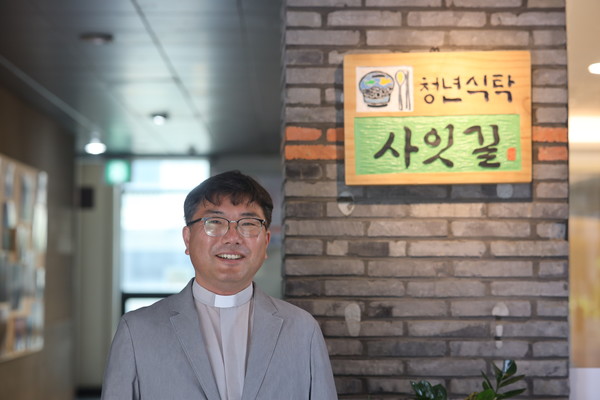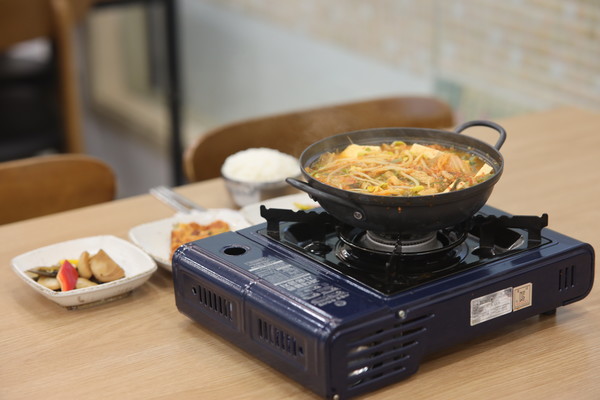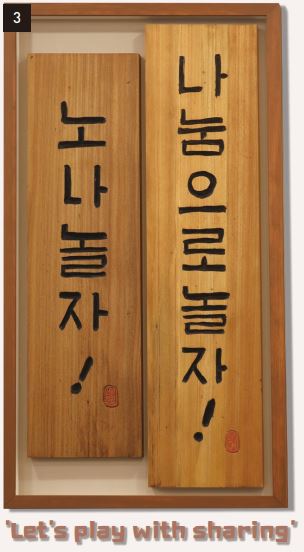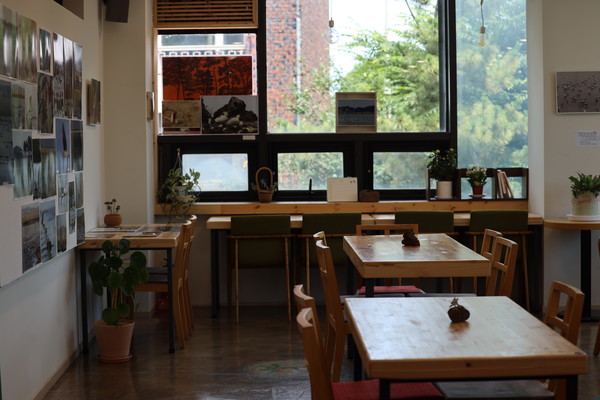Have you visited the restaurant near the JBNU new gate that sells kimchi stew for only 3,000 won? It is called “청년 식탁 사잇길”, run by Priest Paul Kim Hoe-in. Not only can you eat kimchi stew at a low price, but you can also eat as much rice and side dishes as you want. Who was Kim before he opened this superb restaurant?

Priest’s Journey to Authenticity
When Kim was young, he sometimes watched religious movies with righteous content and heard his mother say that she wanted her son to become a priest. He had a vague notion that he should become a priest when he grew up. After graduating from the Department of Electronic Engineering at JBNU, he worked part-time to create homepages and web programs. Around this time, he thought deeply about the meaning of careers, a society that deceives others and abuses power, and the concept of making profits through competition.
“At that time, I enrolled in a seminary course. After four years of undergraduate study and three years of attaining a master's degree, at the age of 38, I became a priest,” he stated. As he entered seminary school relatively late, it was a little difficult to spend time with his peers, but they understood and encouraged each other well.
One of the most important values he feels as a priest is authenticity. He said that it is most important to remain your true self when discovering values such as justice, peace, and sharing. “People who strive for human rights progress occasionally express their selfish intentions or change their mind. However, I don’t think that they are defectors, but have simply revealed their original intentions from the start. Therefore, no matter how much people decorate the surface, I think it is only hypocrisy unless their inner authenticity is apparent.” This was his explanation of the true meaning of “authenticity”.

Containing Authenticity, Meals for Young People
The name of the restaurant that contains Kim’s values is “청년식 탁 사잇길” in Korean, which translates to “Meals for the Youth, Alley” in English. The Korean word, “청년” means “young people”, and “식탁” means a “table” where we can eat together and harmonize. This name’s concept represents more than simply a restaurant where you eat if you pay, it represents that the people who cook the food and the people who eat it are in harmony. In addition, “사잇길” has the meaning of connecting people together, but also includes the concept of existence. In the English name, Kim used “Meals” instead of “Restaurant“, while “Alley” has the dual meaning of “Ally” to emphasize the value of sharing meals with one another.
“I wanted to go beyond the idea of just a restaurant and make it into a space for community. It is a place where everyone can harmonize through eating meals together,” he said. Do not make the mistake of thinking that because the price is low and only a single menu item is sold that it was opened recklessly. Kim visited many similar restaurants and surveyed about four hundred students. He decided on the menu and price through a survey he personally conducted. Based on the survey, he designed the current system that sells only a single menu item at a low price.

Not Only for Young People But for Many People
The main customers at Kim’s restaurant are JBNU students. It is located right next to JBNU, so about two-thirds are JBNU students. The remaining one-third are office workers and the elderly. Not just students but also a diverse group of people visit this restaurant. At first, this restaurant was created mainly to help young people in need, but he soon realized that people of various ages in need c o u l d b e n e f i t f r o m this place. Here is an anecdote demonstrating Kim’s realization. A person who came to eat at the restaurant in its infancy, left a handwritten note. Kim said, “He wasn’t good at writing, but he wrote ‘I really enjoyed the meal well, thank you.’ I could barely make out the handwriting, but I was touched, because there was a warm heart behind the writing.” Kim also desires to help the teenagers who are preparing for independence, out-of-school youth, the low-income class, etc. In the process of searching for support, Geumam-dong Community Service Center informed him that they would help to issue coupons. After that, the restaurant issued one thousand five hundred coupons. These coupons are being used for people to eat with, so Kim and his restaurant team are planning to expand the coupon project.

Space Layout and Helping Hands
This restaurant consists of a dining and rest area. The dining table has a sense of community where the person who cooks and the person who eats are facing each other. Kim calls it a place of harmony between generations, a place where ingredients, people, and the world come together. The rest area is available anytime and can be used for free. It can be used as a place for studying, resting, or meeting people. It is also rented out as a space for specific purposes such as meetings and lectures. You can use it by filling out and submitting the application form. It is available from 9:00 a.m. to 8:30 p.m. Father Kim Hoe-in defines Youth Alley volunteers as friends. Among them, some people who are especially close to the restaurant were selected for job positions. People who work at the restaurant claim they want to be a big help to Kim.
Although this restaurant has the business name of “Meals for the Youth, Alley”, this place is not just for young people. Kim wants people to know that this place is always open to anyone who needs or wants to come. He said, “I am so grateful to these people and hope that the value of sharing will be spread to many people.” The more they sell, the more they lose, but the reason they can still operate is because there is help from volunteers who are willing to practice the value of sharing.
| Kim Doe-hye Reporter, Park Hye-rin Cub-Reporter

